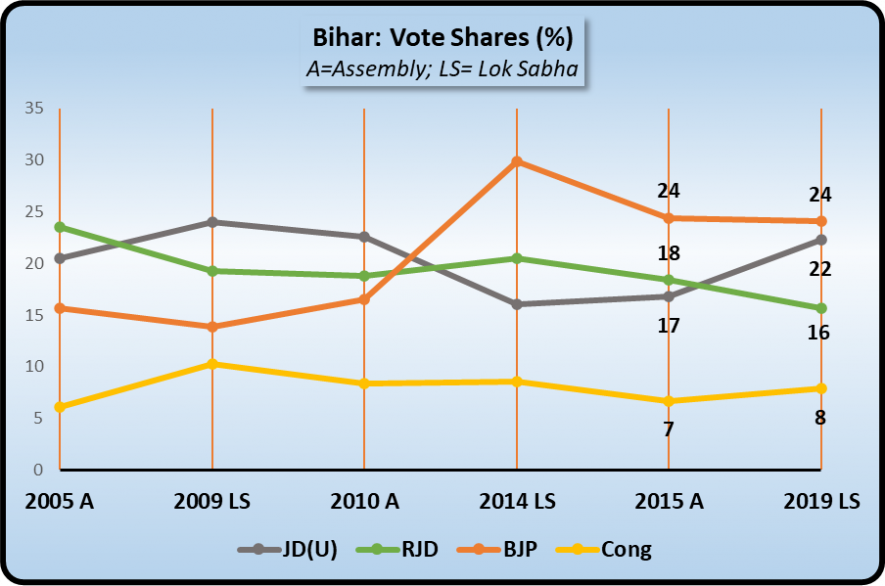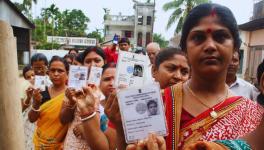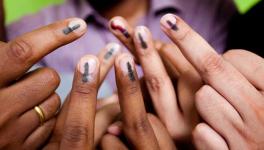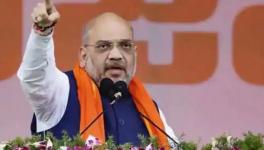Bihar Elections: Angry People, Indifferent Leaders
Image is for representational use only.
Bihar is a highly politicised state – at least that’s the general perception. What this means is probably that people are interested in talking about politics. Also, political aspirations are higher. In the 2019 Lok Sabha Elections, about a fifth of the votes polled went to small parties and independents. In Assembly elections, this share goes to over a quarter of polled votes.
One can see why major political blocs always have a raft of small parties in them, each with localised, and often caste based, influence. This is a result of history – the state was a battleground for the Freedom Struggle, and then for alternative Lohiaite socialist politics, including the powerful Jayaprakash Narayan-led movement in the 1970s.
But this fragmentation also represents a cry of distress. The people in Bihar are desperately seeking some way out of the stasis that grips the state. Parties come and go, alliances get built and crumble, chief ministers rule and quit but the grinding poverty, subsistence economy, lack of education and healthcare, and social strife continues.
The upcoming Assembly elections, to be held in three phases (October 28, November 3 and 7), will again see the same set of characters playing out the same game, though in markedly different conditions because of the raging pandemic.
Recent Voting History
In the past 15 years, almost 70% of the votes polled are distributed between four political parties – Janata Dal-United (JD-U), Bhartiya Janata Party (BJP), Congress and Rashtriya Janata Dal (RJD). [See chart below]
This period has seen present chief minister Nitish Kumar at the helm almost continuously, except for a brief period in 2014-15. He has been aligned with BJP throughout, except for some time in 2015-16, when he switched sides and joined the present Opposition bloc of Congress and RJD. That mahagathbandhan (Grand Alliance) won the 2015 polls decisively and installed Nitish Kumar back in the saddle, only to see him go back to his erstwhile ally BJP, and become chief minister from their side. This shocking betrayal of a mandate and his acrobatic to and fro opposite poles earned him the sobriquet ‘Paltu Baba’ (turncoat).

Both JD-U and BJP have gained in these years, at the cost of RJD and Congress. Within the ruling National Democratic Alliance (NDA), it is the BJP which has gained more, emerging as a force, eating into JD-U’s base. But the BJP has been careful to prop up Nitish Kumar as its mascot, having learnt the bitter lesson in 2015, when it had to content itself with just 53 seats after getting drubbed by the Grand Alliance.
Tough Election for NDA
The upcoming election is again going to be a tough fight for the NDA. The past five years of their joint rule have seen a massive disillusionment of people, especially when the promises held out are considered. Currently, this groundswell of anger is already getting reflected in realignments in both alliances. Various smaller parties are bargaining hard for more seats to contest.
A trusted ally of BJP, Ram Vilas Paswan-led Lok Janshakti Party (LJP) is up in arms sensing that the tide is turning against Nitish Kumar. Disgruntled elements from the Grand Alliance are not keen to join the NDA, as seen in the case of Upendra Kushwaha led Rashtriya Lok Samta Party or RLSP, which has floated its own front with the Bahujan Samaj Party.
Behind all this churning are some key issues that have tainted Nitish Kimar’s stewardship of the state. These burning issues overlap and heighten the distress that the people of the state are reeling under.
COVID-19 Pandemic
Recently, BJP declared that Bihar was soon going to be corona-free. Nothing could be further from the truth. As of September 30, Bihar had a cumulative count of 1.83 lakh confirmed cases. After the first case was reported on March 22, the pandemic spread slowly, with cases reaching only 9,744 by June 30. Then, there was a sharp rise – 50,987 by July 31 and then 1.36 lakh cases by August 31.
While the testing numbers increased sharply in this period, only an estimated 10% of the tests were done through RT-PCR. The national average of these confirmatory tests is about 40%. No contact tracing is taking place, hospitals are overflowing with patients and repeatedly health staff has protested at lack of protective gear.
The holding of elections itself became a hot issue with all Opposition parties demanding a delay. But Nitish Kumar feared that delay may cause him more damage and insisted on timely elections. The fear of the disease, and more than that, the fear of being unable to get proper care, has turned the people very critical of the NDA government, especially because of the whitewash attempted by the ruling partners.
Returnee Migrants
An estimated 30 lakh migrant workers returned to Bihar during April-May from all parts of the country as an ill-conceived and mismanaged lockdown was imposed to contain the coronavirus at the initiative of Prime Minister Narendra Modi.
These workers had become migrants because of the dire economic and social conditions in their villages/towns in Bihar. They worked in agricultural operations, construction, informal sector occupations, industrial workers or employees in the services sector.
Most of the migrant workers lost their jobs, and even their earned wages due to the sudden announcement. Many trekked back home, walking as much as 1,500 kilometers. Hundreds have reportedly died in the journey back due to lack of food and water, or sheer exhaustion.
The returned migrants faced immense distress due to lack of work in their native places. Government schemes of free foodgrain did not reach many and work in the rural job guarantee scheme was patchy and insufficient. All this has led to a strong resentment at the way governments – both Central and state – have played with their lives, and at the colossal neglect of this section of workers. In the coming elections, many of these workers who remain in the villages are preparing to vote out the indifferent government.
Unemployment
For the past 20 months continuously – since February 2019 – the unemployment rate in Bihar has been more than 10%, according to Centre for Monitoring Indian Economy estimates. This is one of the longest and most brutal cycles of unemployment the state has ever seen. Bihar is not an industrialised state, so the slowdown that afflicted the industrial and services sectors mainly since the middle of last year, is not the cause of this staggering numbers. Nor is it the pandemic and lockdown.
In March and April, the jobless rate had zoomed to an incredible 46.6% in Bihar. This chronic state of unemployment has broken the backs of people. Even in September, after a good kharif sowing, unemployment was raging at nearly 12%. Nitish Kumar’s government is being held squarely responsible by the people for this unending tragedy. And this will be one of the most crucial electoral issues in the coming polls.
Corruption and Crime
These are issues on which both Nitish Kumar and his BJP allies have been waxing eloquent for the past 15 years. Even today, after one and a half decades of rule, Nitish Kumar is using the crutches of “jungle raj” under the Lalu Prasad-Rabri Devi era to garner votes. Meanwhile, according to public perception and innumerable ground reports, corruption is rife and crime has taken an unbridled turn for the worse.
The ghost of the Srijan scam involving embezzlement of Rs. 2,000 crore from the treasury is haunting the chief minister. Cases, such as the shelter home atrocities and the continuing caste attacks, have shaken the people. Additionally, the emergence of Hindu fanatic mob crimes, armed provocations and threats against minorities has added to the incendiary mix. These are matters that have rapidly eroded the trust reposed in Nitish Kumar, and his alliance with BJP is seen as a direct reason for this erosion in law and order. This, too, is adding to the discontent against the ruling NDA.
The ground is thus set for a defeat of the opportunistic alliance of JD-U and BJP which usurped power by breaking the pre-poll alliance and wresting power in 2016. However, in an electoral system like ours, a viable and united Opposition is needed to defeat an unpopular incumbent.
The RJD and Congress need to firm up an alliance and accommodate the Left, which has very strong pockets of influence. It is only through having this vision that the NDA can be defeated, despite all its failings. It will be another tragedy for Bihar if the Opposition doesn’t step up and prevent the return of Nitish Kumar and his saffron allies.
Get the latest reports & analysis with people's perspective on Protests, movements & deep analytical videos, discussions of the current affairs in your Telegram app. Subscribe to NewsClick's Telegram channel & get Real-Time updates on stories, as they get published on our website.
























